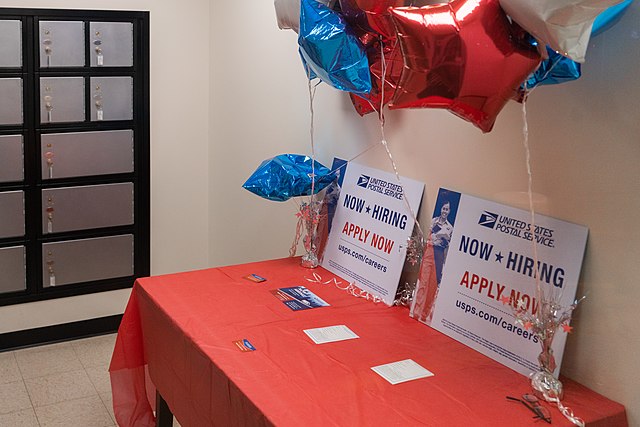Opinion | Workers have every right to hold out for improved job opportunities
May 25, 2021
Some version or another of the phrase “no one wants to work anymore” has recently become a fixture of drive-thru windows and Republican talking points alike. The conservative theory behind America’s labor shortage is that generous unemployment benefits are keeping the workforce tethered to their couches instead of cash registers.
This is largely disproven, as is most fiscally conservative wisdom on dealing with economic crises, and misses a crucial addition to the phrase — “for terrible employers.” Given that jobless benefits aren’t the driving force behind the labor shortage, we must look to other variables for a solution.
Many companies might be shocked to find out that human beings are more than labor output machines, willing to do whatever menial work you put in front of them. Empty phrases such as “competitive pay” — as if status quo wages are competitive with the cost of living anyway — and “benefits” coupled with dangling a free daily meal in front of prospective workers just doesn’t cut it anymore.
Employees need to feel some sense of safety at work — the COVID-19 pandemic has shattered this for many, particularly in places like restaurants and warehouses. They need to have resources for child, elder and sick care, so that their loved ones can be safe and comfortable while they’re gone. They need to have access to vaccines. And after all this, people are increasingly demanding, and have always deserved work that recognizes their value as employees and existence separate from it. Workers have every right to hold out for quality job opportunities in this uneven, uncharted pandemic recovery and they’re exercising it.
This all seems like a real bind for employers, but there’s actually a simple fix to this pesky labor problem — improving the job. Raise wages, strengthen benefits and offer the autonomy that Americans grew accustomed to during the pandemic. Many turned to gig work such as food delivery, which offered flexible hours if nothing else. How can these workers be expected to return to long shifts under a manager’s watch for minimum wage? The White House seems to agree in saying that the days of stagnant, single digit wages are gone — good riddance.
Massive corporations and small businesses alike have begun to apply this lesson. Under Armour and Chipotle have both committed to raising wages to $15 an hour by the end of June, while other companies have made more gradual promises, such as Bank of America’s plan to reach $25 an hour by 2025.
Klavons, a local ice cream shop located in Pittsburgh’s Strip District neighborhood, even made national news for adopting a $15 hourly wage, roughly doubling the previous wage and federal minimum of $7.25. This resulted in more than 1,000 applications and no apparent difference in revenue, a clear signal to the 44% of small businesses currently unable to fill job openings.
Evidence of the market acquiescing to worker’s standards isn’t purely anecdotal. The first quarter of 2021 showed the strongest wage growth since at least 2001, though white people have disproportionately benefited. This will be difficult to correct purely through market forces and highlights that even if employers do provide more attractive job opportunities, the government will have to step in to support a full and just recovery.
These inequalities can partially be addressed through social investments such as President Joe Biden’s American Jobs Plan, a relatively popular piece of infrastructure legislation that hovers around $1.7 trillion in its latest iteration. This desperately needed bill calls for investments into not only roads and bridges, but public transportation, child care in areas of high need and home healthcare work. While this will hardly equalize who’s enjoying the rise in wages, it begins to address many of the barriers creating this racial discrepancy.
Naturally, Republicans have countered with an anemic $568 billion bill that sticks to more traditional infrastructure concerns. The plan, as is the case with most Republican policies, makes little sense once you break through the superficial talking points.
We’re all in agreement that there’s a labor shortage — that’s a start. Research suggests that extended unemployment benefits are not driving this — rather it’s more intangible safety and self-valuation concerns driving the reluctance to return to work. Yet, the Republican party has shown little interest in legislating a living wage, fostering a sense of safety with continued mask mandates or really anything besides, as Sen. Bernie Sanders, I-Vt., put it, attempting to starve people back to work.
Luring back employees depends on significant government investment and improved treatments from employers. No amount of hand wringing from Republicans and business owners will change that fundamental truth. Until then workers can, and should stay home.
Jack Troy writes about politics, SGB and being tired of capitalism. Write to him at [email protected].



